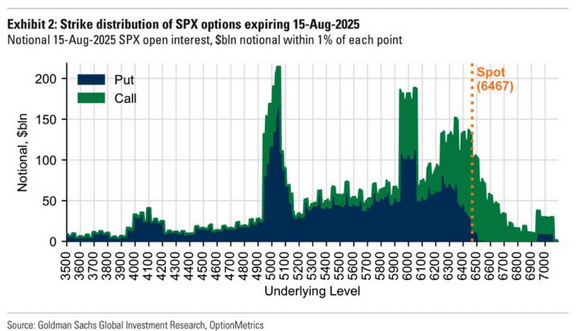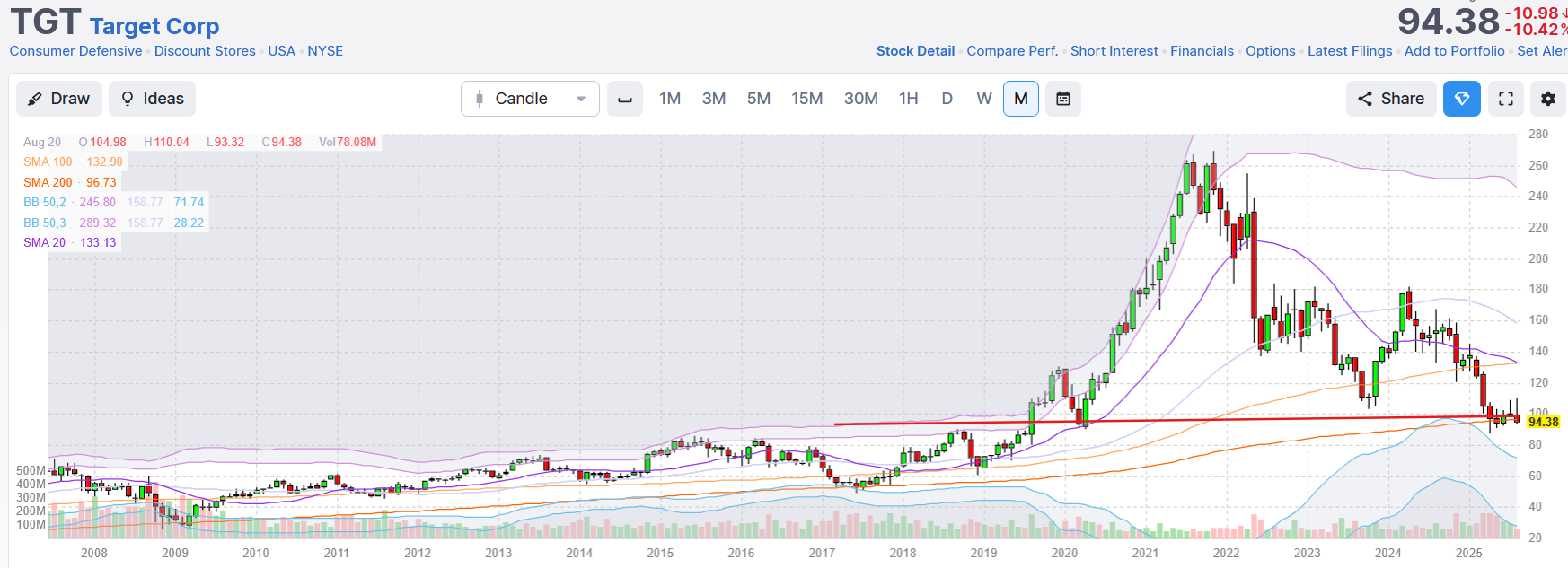China’s Xi speaks with Trump by phone, discusses Taiwan and bilateral ties
Nearly $3 trillion of notional stock options expire on Friday’s open expiration (OPEX day). Over half of the OPEX volume is in S&P 500 options, with the remainder in single stock options. The graph below provides details on the split between puts and calls, and the strike prices and open interest of the options.
Almost all of the puts are out of the money (strikes are below the S&P 500 price), while many calls are in the money. So, how might this record OPEX for August impact the market?
To answer, it’s essential to understand that banks and brokers are often on the other end of these trades. These liquidity providers actively hedge positions to manage risk. One primary method is delta hedging.
Delta measures the change in the option value per change in the stock price. As the stock price increases toward the call options’ strike price, the delta increases to 1.0. Therefore, given that many call option strike prices are below current prices, many have deltas at or near 1, and put deltas below 1.
Thus, dealers will have limited hedging needs regarding the calls if the market rises. However, a decline could force dealers to reduce their hedges by effectively selling. Similarly, with many puts out of the money, selling to hedge the puts could add to the downside.
Consider the following OPEX scenarios:
- A steep decline forces dealers to reduce their call hedges and effectively sell. Furthermore, they will need to increase hedges on puts, which could further push the market lower.
- If the market exhibits low volatility, the impact will be minimal.
- A sharp increase will force some dealers to hedge more of the calls and add fuel to a rally. However, the amount of additional hedging is limited.

Target Underwhelms: Blames Weak Consumer
The theme of retrenchment in personal consumption continued on Wednesday with Target’s (NYSE:TGT) quarterly earnings report. Target reported its sales were $25.7 billion, a mere 1.1% increase year-over-year, but slightly short of Wall Street’s $25.74 billion estimate. Comparable sales grew modestly by 0.3%, driven by a 4.7% rise in digital sales.
Conversely, in-store comparable sales declined by 5.7%. EPS was $1.85, down 11.9% from the prior year and decently below the expected $2.30. The gross profit margin was 27.2%, lower than the previous year’s 27.4% and analyst expectations of 28.7%.
As judged by its guidance, Target executives remain concerned that recent consumer behaviors will continue. It revised its full-year EPS guidance downward to $8.30-$8.90 from $9.00-$9.70. Here are a few quotes from its executives:
We are taking a cautious approach to our outlook for the balance of the year, given the macro backdrop and ongoing investments to drive long-term growth.
The holiday shopping season is off to a really good start, but we are guiding for some conservatism.
In the first quarter, our team navigated a highly challenging environment
Target traded down over 10% on the earnings report and resignation of its CEO. It now sits at its Pandemic lows, as shown below. Check out our Commentary below on UPS, a stock also trading at its 2020 lows.
Tweet of the Day

